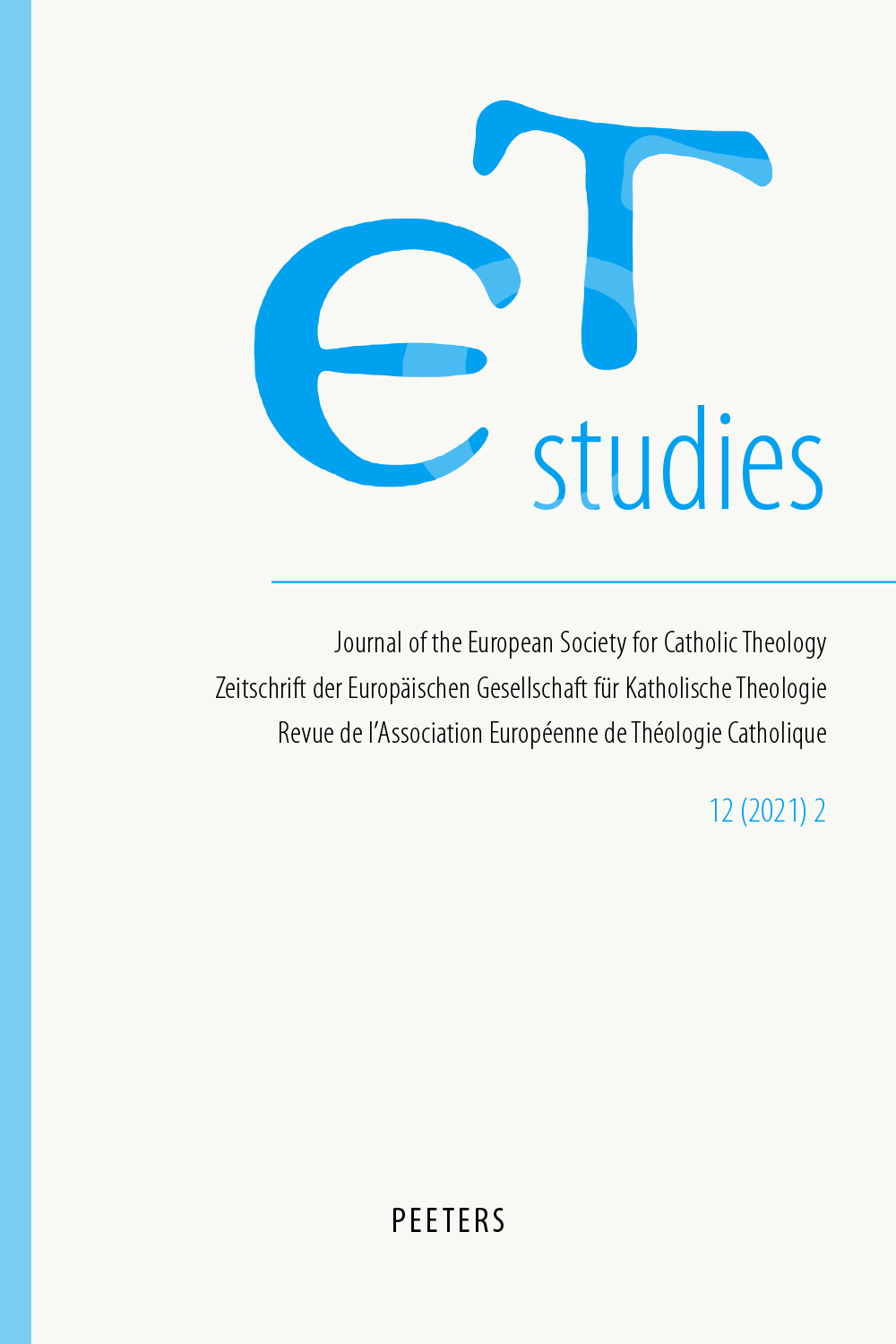 previous article in this issue previous article in this issue | next article in this issue  |

Preview first page |
Document Details : Title: Es geht ums Konzil! Subtitle: Pastoraltheologische Anmerkungen inmitten der Wiederentdeckung einer synodalen Kirchengestalt Author(s): LOFFELD, Jan Journal: ET-Studies Volume: 13 Issue: 1 Date: 2022 Pages: 59-77 DOI: 10.2143/ETS.13.1.3290781 Abstract : Papst Franziskus hat beim 50jährigen Jubiläum der Bischofssynode 2015 den gegenseitigen Verweiszusammenhang von einer lehrenden und einer lernenden Kirche als wesentliches Charakteristikum einer synodalen Ekklesiologie herausgestellt. Dies stellt allerdings vor Fragen: Was wird bzw. darf genau gelernt und damit verändert werden? Im Verweis auf den nachkonziliar dominanten Antagonismus vom 'Recht der Wahrheit' versus einem 'Recht der Person' möchte der folgende Artikel zunächst historisch und theologisch rekonstruieren, wie in den letzten Jahrzehnten während vielfältiger kirchlicher Konfliktsituationen und im Zusammenhang diverser Singularisierungsprozesse dem 'Recht der Wahrheit' innerkirchlich gegenüber dem 'Recht der Person' häufig der Vorzug gegeben wurde. Dies wäre vor dem Hintergrund des pastoralen Wesens des Konzils, welches Zeitkontexte theologisch-erkenntnistheoretisch würdigt, allerdings nicht nötig. Vielmehr zeigen sich prägende Antagonismen in Bezug auf das Evangelium, verstanden als reflexiv-theologische Instanz, verbindbar. Welches Kirchenbild sich schließlich mit einer synodalen Kirchengestalt, die sich als lernend versteht, verbinden könnte, bildet den Ausblick der folgenden Gedanken. On the occasion of the 50th anniversary of the Synod of Bishops in 2015, Pope Francis emphasised the mutual relationship between a teaching and a learning Church as an essential characteristic of a synodal ecclesiology. However, this raises questions: What exactly is or may be learned and thus be changed? With reference to the dominant antagonism in the post-conciliar period of the 'right of truth' versus a 'right of the person', the following article would first like to reconstruct historically and theologically how in recent decades during diverse situations of conflict in the church and in the context of various individual judicial processes, the 'right of truth' was often given preference within the church over the 'right of the person'. However, this would not be necessary against the background of the pastoral nature of the Council that appreciates contemporary contexts theologically and epistemologically. Rather, formative antagonisms, in relation to the gospel, can be brought together when understood as an instance of reflective theology. Which image of the church could finally be associated with a synodal church that understands itself as a learning church forms the outlook of the following reflections. À l’occasion du 50e anniversaire du Synode des évêques en 2015, le pape François a souligné que la relation mutuelle entre une Église enseignante et une Église apprenante était une caractéristique essentielle d’une ecclésiologie synodale. Toutefois, cela soulève des questions: qu’est-ce qui, précisément, est ou peut être appris, et, ainsi, être changé? Concernant l’antagonisme principal dans la période postconciliaire, entre le «droit de la vérité» et le «droit de la personne», cet article voudrait d’abord retracer sur le plan historique et théologique comment, au cours des dernières décennies, dans diverses situations de conflit dans l’Église, et dans le cadre de diverses procédures judiciaires individuelles, l’Église a souvent donné priorité au «droit de la vérité» sur le «droit de la personne». Mais cela ne serait pas nécessaire si l’on prend en compte la nature pastorale du Concile qui prend acte des contextes contemporains du point de vue théologique et épistémologique. On peut, au contraire, rapprocher les antagonismes formateurs, en relation avec l’évangile, lorsqu’ils sont compris comme un lieu de réflexion théologique. Quelle image de l’Église pourrait-on, finalement, associer à une Église synodale qui se comprend comme une Église apprenante? Telle est la perspective des réflexions qui suivent. |
 |


